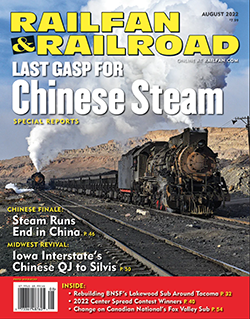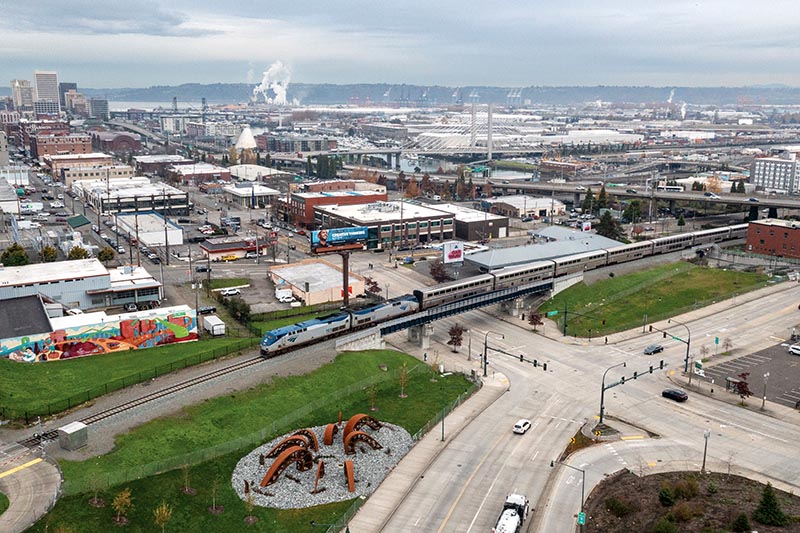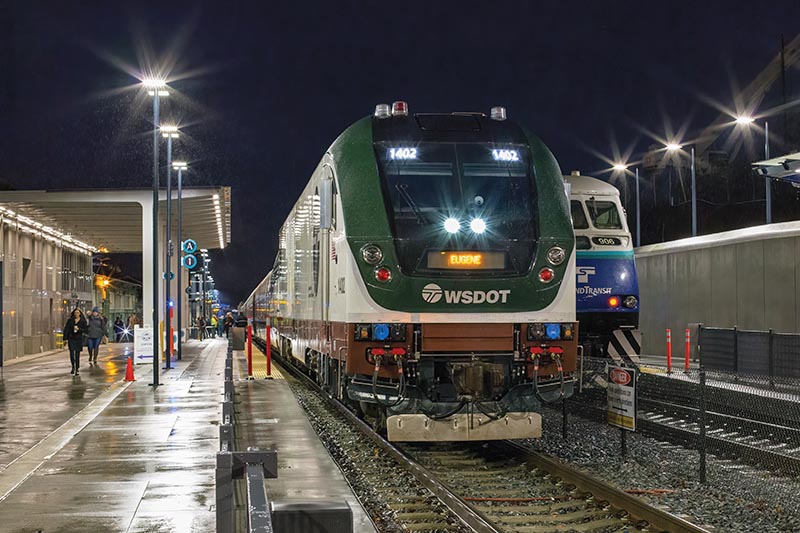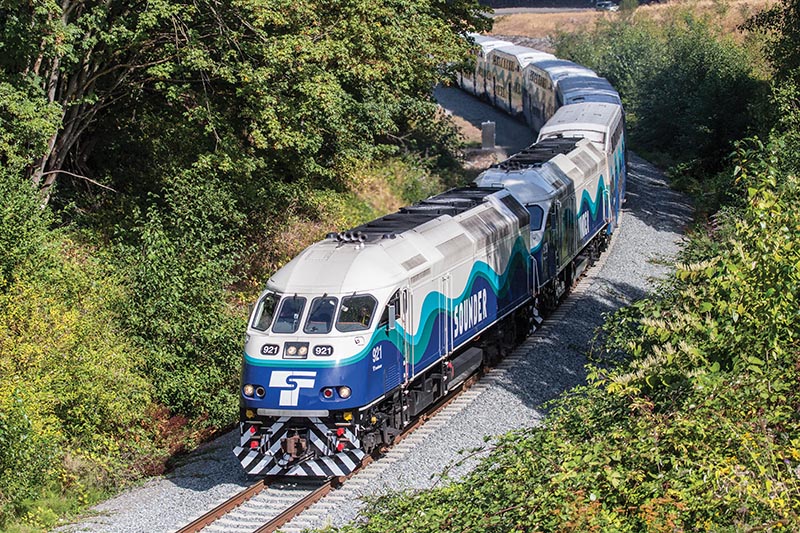 by Steve Carter/photos by the author
by Steve Carter/photos by the author
You couldn’t get there from here! At least not by train. More importantly to commuters of the south Puget Sound area, not by Sound Transit trains (known as Sounders). Through voter approval, regional transit authority Sound Transit endeavored to extend its train service another eight miles, from Seattle, past Tacoma (end of the line at the time), to Lakewood, Wash.
Getting Sounder Out of Tacoma
With a short but important exception, Sounder service from Seattle to Tacoma used the double-track BNSF Seattle Subdivision (former Northern Pacific main lines). For various reasons, Sound Transit decided not to use the Amtrak station that was located in Tacoma but instead built a small station — known as the Tacoma Dome Station — a couple blocks southwest at Freighthouse Square (a former Milwaukee Road freight house turned into commercial retail space). Along the back of Freighthouse Square is the former Milwaukee Road main line, which became part of the city-owned Tacoma Rail empire. The Milwaukee Road and NP had a connection in Tacoma, one that can still be traced if you know where to look. Even if it still existed, it would never work for commuter service.

ABOVE: The first revenue Coast Starlight traverses the Lakewood Sub, crossing Pacific Avenue in downtown Tacoma on November 18, 2021.
Near Reservation, at a point where the Milwaukee had an elevated crossing of NP, a short, steep connector ramp was built. The ramp allowed Sounder trains to leave the BNSF line and use Tacoma Rail to reach the Tacoma Dome Station, in the process crossing the mostly wooden, historic S-curve trestle dating back to The Milwaukee Road days. The trestle included a short steel girder bridge over G Street that displayed a Milwaukee Road herald. This section was and is shared with Tacoma Rail and dispatched by BNSF. Tacoma Rail uses the line to reach points south, such as Fredrickson and McKenna, and is known as the Tacoma Rail Mountain Division. A three-track coach yard was constructed just east of the trestle. That was the first step in what is now known as Sound Transit’s S-Line.
Sound Transit’s project, officially known as the Lakewood Extension, at first seemed like an easy thing to do. After all, there is an existing line running through Lakewood (Prairie Line) and the original builder of that line (NP) even ran freight and passenger trains between Tacoma and what is now Lakewood.
NP’s route between Union Station in Tacoma and south past Lakewood wasn’t exactly a straight shot and involved backing southbound trains out of Union Station. This method wouldn’t work for Sounders, in no small part because they leave the former NP line well before reaching the remnants of Union Station. Besides, all the lines used by NP to and from Union Station are long gone; the station itself is now a federal courthouse.

ABOVE: On December 18, 2017, Amtrak Cascades Train 501 arrives at the new Tacoma Dome Station. The train would derail minutes later on what was supposed to be the inaugural run on the Point Defiance Bypass.
After a period of head-scratching, a solution was developed. Sound Transit would build a connection between the old Milwaukee Road line and the former NP Prairie Line at a point near Jefferson Avenue and South 27th Street, a distance of just under a half-mile. This project was known as the “D to M Street Project,” M Street being another three-quarters of a mile south of Jefferson Avenue and South 27th Street. So how hard could this be? Initial estimates came in at $161.6 million.
The major hurdle involved crossing Pacific Avenue at the very south edge of downtown Tacoma near a perceived boundary between two Tacoma neighborhoods. As Sound Transit’s plans began to sink in, it wasn’t long until the money was not the only reason this project would be difficult.
Crossing Pacific Avenue at grade was part of Sound Transit’s original plan. The line would also cross South Tacoma Way on a sweeping curve. Crossing the two busy roads at grade would significantly impact traffic. The Washington State Department of Transportation (WSDOT) had a plan developed much earlier that would use a bridge over Pacific Avenue and avoid crossing South Tacoma Avenue. However, that plan also involved a 3.25 percent grade. After a lot of negotiation, Sound Transit conceded to the bridge crossing and its engineers were able to reduce the grade on the hill to 2.87 percent…



